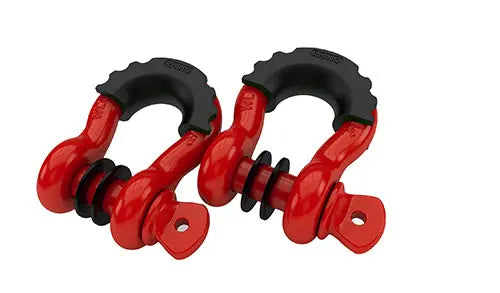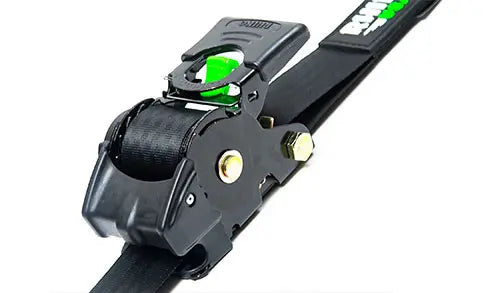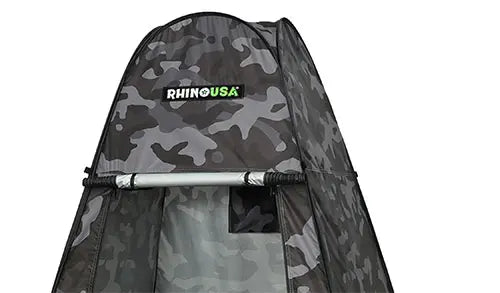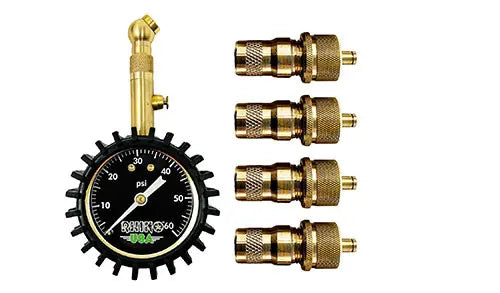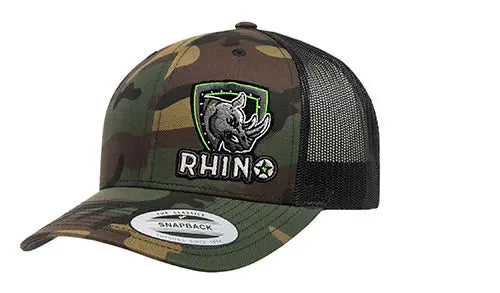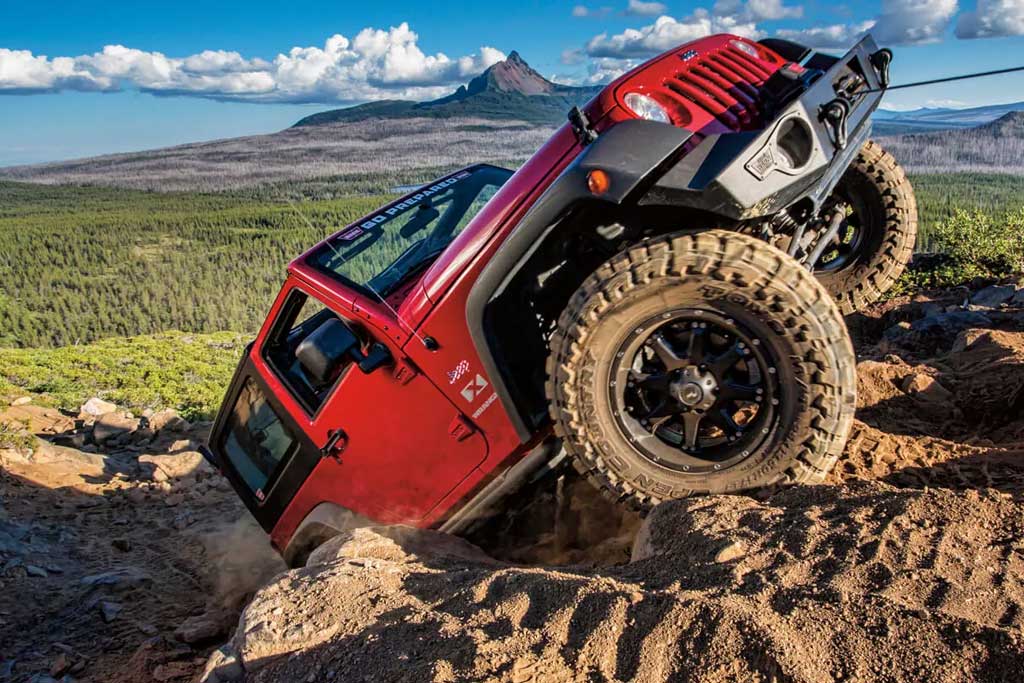
How to Use a Winch to Recover a Jeep
As an off-road enthusiast, knowing how to use a winch on your Jeep is crucial for those times when you find yourself stuck in challenging terrain. A winch is an indispensable tool for Jeep owners, as it can help you recover your vehicle from various sticky situations. With the right technique and an understanding of how to operate a winch effectively, you can efficiently retrieve your stranded Jeep while minimizing potential risks.
Having a winch mounted to your Jeep not only adds to its off-road capabilities but can also be a lifesaver when navigating through treacherous environments. Whether you're traversing muddy trails or experiencing an unexpected obstacle, a winch helps ensure the success of your off-roading adventures.
In this article, we will discuss the steps and considerations involved in using a winch to recover your Jeep. From selecting suitable anchoring points to understanding the proper operation of the winch, we will provide the essential information required to utilize this important tool effectively and safely.
Understanding Your Winch
Before you can use a winch to recover a Jeep, it's essential to understand the different components and types of winches available. This knowledge will ensure that you select the best winch for your vehicle and utilize it effectively during recovery situations.
Winch Components:
- Winch: The device that houses the motor and gears to pull the winch line or cable.
- Winch Line or Cable: This is the rope or steel cable that attaches to the object being pulled, such as your Jeep.
- Fairlead: A guide to help properly align the winch line as it is being spooled and unspooled.
- Winch Controller: The remote or in-cabin switch used to control the winch motor.
There are two main types of winches to consider for your Jeep, and each has its unique advantages and disadvantages:
-
Electric Winches: These winches use your Jeep's battery as a power source and are the most common option. They are easy to install and generally less expensive than hydraulic winches. However, electric winches may drain your battery if used extensively or if your vehicle's electrical system isn't adequately upgraded.
-
Hydraulic Winches: These winches are connected to your Jeep's power steering pump and use hydraulic fluid. They can generate more sustained power than electric winches and function without draining your battery. However, hydraulic winches are typically more expensive and require a more complex installation process.
When choosing a winch, consider your Jeep's weight and the type of off-roading conditions you may encounter. It's crucial to select a winch with an appropriate weight capacity for your vehicle and intended usage. Generally, experts recommend selecting a winch with a weight capacity of at least 1.5 times the gross vehicle weight (GVW) of your Jeep. This will ensure that the winch can effectively and safely recover your vehicle in most situations.
In summary, understanding the different components and types of winches will enable you to choose the best option for your Jeep. Keep in mind the weight capacity and intended usage of your vehicle during the selection process to ensure optimal performance and safety.
Preparing Your Jeep and Winch
Before venturing off-road, it's crucial to properly prepare your Jeep and winch for recovery situations. Follow these steps to ensure successful and safe winching:
1. Mounting the winch:
Mount the winch securely to your Jeep's front bumper or winch mount. Make sure it is properly aligned and installed to prevent any damage to your vehicle and ensure optimal pulling power.
2. Spooling the winch line:
Avoid tangling and ensure smooth operation by properly spooling the winch line onto the drum. You can do this by:
- Unrolling the line until a few wraps remain on the drum
- Holding tension on the line as you slowly spool it back onto the drum, layer by layer
- Keeping the line wound tight and even to maintain its effectiveness
Proper Line Spooling Incorrect Line Spooling Tight and even layers Loose, overlapping layers Line is well-organized Line is tangled
3. Inspecting the winch components:
Before each use, inspect your winch and its components to identify any potential problems. Look for signs of damage or wear, such as:
- Frayed or damaged winch line
- Loose or corroded electrical connections
- Worn or broken components
In case of any issues, address them immediately to avoid further complications during recovery operations.
By properly preparing your Jeep and winch, you'll be ready to handle any off-road recovery situation with confidence and ease.
Using the Winch Safely
Winching can be a straightforward process, but there are safety measures that must be followed to ensure a successful recovery of your Jeep. Here's a step-by-step guide on safely operating the winch:
-
Park your vehicle: Find a suitable anchor point that is sturdy enough to hold the weight of the stuck vehicle. Engage the parking brake of both the recovering and stuck vehicles. This will prevent any unexpected movement.
-
Disconnect the battery: Before starting the winching process, disconnect the battery of the stuck vehicle. This helps prevent electrical damage during the recovery.
-
Clear the area: Make sure all bystanders are at a safe distance from the winching operation. This will minimize the risk of any accidents.
-
Gather necessary equipment: Collect all the essential winch gear, such as gloves, shackles, winch line dampener, snatch block, tree saver strap, and winch remote control.
-
Attach the winch line: Inspect the winch line for any damages, then carefully unspool it and attach it to the anchor point using shackles or other suitable connectors. If necessary, use snatch blocks and tree straps to change the winching angle or increase the winching power.
-
Hand signals or two-way radios: Establish clear communication with any helpers involved. Use hand signals or two-way radios to relay information and ensure everyone is aware of the operation's progress.
-
Use line dampener: Place a winch line dampener over the cable to minimize potential hazards if the line were to snap during the recovery process.
-
Start winching: Operate the winch slowly and steadily, paying attention to the tension and angle of the cable. Regularly communicate with your helpers and make adjustments as needed.
-
Monitor progress: Keep an eye on the position of the stuck vehicle and the recovering vehicle. If needed, adjust the length or angle of the winch line.
-
Secure the vehicle: Once the Jeep is successfully recovered, safely secure the winch, ensuring that the winch line is neatly spooled back onto the drum. Lastly, reconnect the battery of the stuck vehicle.
By following these steps and keeping safety in mind, you can efficiently and effectively use a winch to recover your Jeep in any off-road situation.
Troubleshooting and Maintenance
While using a winch on your Jeep, you may encounter some common issues like overheating, motor failure, or cable damage. To help you quickly address these issues, we have provided some troubleshooting tips and maintenance tasks.
Overheating: One common problem is an overheated winch motor. If you notice your winch is getting too hot, stop using it immediately and give it some time to cool down. Avoid continuous winching without breaks, as this can lead to overheating and damage the motor.
Motor Failure: If the winch motor does not function, first check the battery voltage and electrical connections. A weak battery or poor connection can result in motor failure. If the issue persists, consult the winch manufacturer or a professional for further assistance.
Cable Damage: Inspect the winch cable regularly for fraying or damage. Synthetic rope should be cleaned with clean water and allowed to dry before being re-wound under tension. For steel cables, use appropriate cable cleaners or kerosene to keep it clean and free from rust.
Below are some important maintenance tasks you should perform regularly to keep your winch in good working condition:
- Lubricate moving parts: Apply a lubricant to all moving parts of the winch, such as brakes and gears, to ensure smooth operation and prevent rust formation.
- Inspect the winch line: Check the winch line for fraying, wear, or damage. Replace it if necessary.
- Take care of the remote control: Keep the remote control clean and store it properly when not in use to avoid damage.
- Check electrical connections: Ensure that the battery connections and wiring are securely fastened and free from corrosion.
By keeping a regular maintenance schedule and being aware of common troubleshooting issues, you can ensure the longevity and efficient performance of your Jeep's winch.
Advanced Winching Techniques
In this section, we'll introduce you to some advanced winching techniques that can be useful in challenging off-road situations. These techniques – double-line pulls and side pulls – can help you recover your Jeep more effectively. Remember to practice these techniques in a controlled environment before attempting them in the field.
Double-Line Pulls
A double-line pull is a technique that uses a snatch block, which doubles the pulling power of your winch and reduces the strain on the winch motor. It's particularly helpful when dealing with heavy loads or tricky angles. To perform a double-line pull, follow these steps:
- Attach a snatch block to your recovery point, and thread the winch line through it.
- Secure the hook of the winch line back to another anchor point on your Jeep (e.g., a tow point or another recovery point).
- Operate the winch as usual, taking care to maintain tension on the winch line and ensuring that the cable is winding evenly back onto the winch drum.
Benefits: More pulling power, reduced stress on winch motor, and better control. Limitations: Longer setup time, requires additional equipment (snatch block).
Side Pulls
Sometimes, you may find yourself in a situation where your Jeep is stuck at an angle that doesn't allow for a straight pull. In these cases, a side pull comes in handy. A side pull uses the winch to pull your Jeep from the side, rather than from the front or rear. Here's how to perform a side pull:
- Identify a suitable anchor point to the side of your Jeep, ensuring that it is both sturdy and in line with the direction of your desired pull.
- Attach the winch line to the anchor point using recovery straps or a tree saver, making sure to avoid any sharp edges that could damage the line.
- Operate the winch cautiously and gradually, monitoring the tension on the cable and the position of your Jeep as it moves.
Benefits: Enables recovery in situations with limited access or uneven terrain. Limitations: Puts greater stress on winch, increased risk of snapping or failing the line, may not always be possible given the surroundings.
When using these advanced winching techniques, always prioritize safety by wearing gloves, keeping a safe distance, and ensuring all connections are secure. With practice, you'll become more confident and proficient in navigating even the most challenging off-road recovery situations.
Conclusion
In this article, we've discussed the essential aspects of using a winch to recover a Jeep. It's crucial to emphasize the importance of proper preparation, safety, and technique when working with a winch. By following these guidelines, you not only ensure your safety but also protect your Jeep from potential damage.
- Proper preparation includes assessing the situation and selecting suitable recovery points and accessories like tree protectors and D-rings.
- Prioritize safety precautions such as wearing gloves, draping a damper on the winch cable, and maintaining a safe distance from the winching process.
- Mastery of winching techniques, like knowing how to manipulate the winch controller and maintaining tension on the winch line, will improve your overall experience.
To become proficient with your winch, it's essential to familiarize yourself with its operation and practice using it regularly. This hands-on experience will help build your confidence and skill in recovering your Jeep during off-road adventures.
In conclusion, learning how to use a winch effectively on your Jeep can be an empowering experience, providing you with the valuable self-reliance and capability necessary for off-road adventures. Happy winching!
- Choosing a selection results in a full page refresh.


